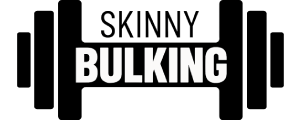Building muscle is a goal for many people, yet the cost of gym memberships, supplements, and personal trainers can be a significant barrier to achieving that goal. However, building muscle doesn’t have to break the bank. In this post, we will explore ways to bulk up without spending a fortune. From home workouts and free resources available online to affordable meal planning and supplement alternatives, we will provide you with practical tips and strategies to help you pack on muscle mass on a budget. You don’t have to sacrifice your financial stability to achieve your fitness goals. So, let’s dive in and find out how you can get the best results without spending a fortune.
1. The benefits of resistance training and building muscle

Image: pixabay
Resistance training and building muscle have numerous benefits beyond the aesthetic appeal of having a toned and sculpted physique. For starters, individuals who engage in regular resistance training have been found to live longer and have a lower risk of chronic diseases such as diabetes, heart disease, and some types of cancer. Building muscle also helps to boost metabolism, which can lead to greater calorie burn throughout the day and ultimately aid in weight loss. Additionally, resistance training strengthens bones and helps to improve overall functional fitness, making everyday tasks like lifting groceries or climbing stairs easier and less strenuous.
Furthermore, building muscle can also have a positive impact on mental health. Studies have shown that regular strength training can help to reduce symptoms of anxiety and depression, improve cognitive function, and enhance overall well-being. The sense of accomplishment and confidence that comes with seeing progress and achieving goals in the gym can also have a positive impact on mental health and self-esteem.
While many people may assume that building muscle requires expensive gym memberships, supplements, and equipment, there are plenty of affordable and accessible ways to participate in resistance training and build muscle at home or on a budget. By incorporating bodyweight exercises, resistance bands, and basic equipment like dumbbells or kettlebells, individuals can reap the numerous benefits of building muscle without breaking the bank.
2. Common misconceptions about building muscle on a budget
There are a lot of misconceptions about building muscle on a budget. Many people believe that you need to invest in expensive supplements or gym memberships in order to see results. However, this is simply not true.
One of the biggest misconceptions is that you need to consume a lot of protein in order to build muscle. While protein is important for muscle growth, you don’t necessarily need to consume large amounts of it. In fact, studies have shown that consuming more than 1 gram of protein per pound of body weight does not result in any additional muscle growth.
Another common misconception is that you need to purchase expensive supplements in order to build muscle. While supplements can be helpful, they are not necessary. In fact, many supplements are simply a waste of money and don’t provide any real benefit.
Finally, many people believe that you need to have a gym membership in order to build muscle. While a gym can be a great resource, it’s not necessary. There are plenty of exercises that can be done at home with little to no equipment.
By understanding and debunking these common misconceptions, you can start building muscle on a budget without wasting your money on unnecessary expenses.
3. How to create a muscle-building meal plan on a budget
If you want to build muscle, you need to fuel your body with the right nutrients. But, eating well can be expensive. So, how can you create a muscle-building meal plan on a budget?
First, focus on whole foods like lean meats, eggs, dairy, fruits, and vegetables. These foods are typically cheaper than processed or packaged foods and provide more nutritional value.
Next, buy in bulk. Look for deals on larger packages of meat or produce and freeze what you don’t use right away. This can save you money in the long run.
Consider meal prepping for the week ahead. This not only saves you time but also prevents you from making impulsive purchases or ordering takeout, which can be expensive and often not as healthy.
Don’t forget about carbohydrates. Rice, potatoes, and pasta are all affordable options that can provide the energy you need to power through your workouts.
Finally, be creative with your meals. Look for recipes online that use affordable ingredients and experiment with different spices and seasonings to add flavor without breaking the bank.
By incorporating these tips into your meal planning, you can build muscle without spending a fortune.
4. The importance of protein and how to get enough of it without spending a lot
Protein is essential for building and repairing muscle tissue, but it can be expensive to consume enough of it on a regular basis. Luckily, there are ways to get the protein you need without breaking the bank.
One of the cheapest sources of protein is canned tuna, which is both high in protein and relatively low in cost. Other affordable sources of protein include eggs, chicken breast, and cottage cheese. Vegetarian and vegan options include beans, lentils, and tofu. These protein sources can be incorporated into a variety of meals, such as salads, stir-fries, and omelets.
In addition to whole food sources of protein, there are also protein powders available that can be a cost-effective way to boost your protein intake. Look for protein powders that have a high protein content per serving and are made from quality ingredients.
Another way to save money on protein is to buy in bulk. Purchasing larger quantities of protein sources, such as meat or beans, can be cheaper in the long run than buying smaller portions. Look for sales and discounts to make the most of your budget.
Remember, getting enough protein is important for building muscle, but it doesn’t have to be expensive. With a little planning and creativity, you can get the protein you need to build muscle without breaking the bank.
5. Affordable protein sources and supplements
Protein is a key component for building muscle, but many people believe that it has to come with a hefty price tag. However, there are affordable protein sources and supplements that can help you build muscle without breaking the bank.
One of the most affordable sources of protein is canned tuna. It is high in protein, low in fat, and can be bought in bulk for a very reasonable price. Eggs are another great source of protein and can be eaten at any time of the day. They are versatile and can be cooked in many different ways to keep things interesting.
If you’re looking for a quick and easy way to get a protein boost, protein powder can be a great option. Look for generic brands or sales to find affordable options. Whey protein is a popular choice and can be used in smoothies or mixed with water or milk for a quick and easy shake.
Another affordable option is to buy protein in bulk. This could be in the form of chicken breasts, ground beef, or even plant-based proteins like beans or lentils. Buy in bulk and freeze in portions for an easy way to have protein on hand without having to make frequent trips to the store.
Remember, supplements should never replace whole foods but can be an affordable addition to your diet to help you reach your protein goals. With a little planning and creativity, you can build muscle on a budget without sacrificing quality protein sources.
6. Budget-friendly options for gym memberships and equipment
When trying to build muscle on a budget, it’s important to consider gym memberships and equipment costs. Fortunately, there are many budget-friendly options available.
Firstly, consider a local community center or YMCA. These facilities often offer affordable membership options and provide essential equipment such as weights, cardio machines, and resistance bands. Some may also offer free classes for members.
Another option is to look for gym chains that offer low-cost memberships or have a pay-per-visit option. Many of these gyms can be found in most cities and offer basic equipment and weight machines.
If you prefer to work out at home, investing in some basic equipment is a great option. Look for second-hand equipment on online marketplaces or in local classifieds. You can also create your own workout equipment using household items such as water jugs, backpacks filled with books, and resistance bands.
Don’t forget that bodyweight exercises can also be very effective when building muscle. Push-ups, squats, and lunges are all great exercises that require no equipment and can be done anywhere.
To sum up, building muscle on a budget is definitely possible. By choosing budget-friendly options for gym memberships and equipment, you can still achieve your fitness goals without breaking the bank.
7. Effective workout routines for building muscle without expensive equipment
Building muscle doesn’t have to be expensive. In fact, you can achieve great results with simple equipment that won’t break the bank. Dumbbells, resistance bands, and bodyweight exercises are all great options to build muscle without expensive equipment.
One effective workout routine that you can do with just dumbbells is a full-body workout. Start with a warm-up of five to ten minutes of cardio, then move on to exercises such as dumbbell squats, dumbbell lunges, dumbbell bench press, and dumbbell rows. Aim for three sets of 10-12 reps for each exercise.
Resistance bands are also a great option for building muscle on a budget. You can do exercises such as bicep curls, tricep extensions, and lateral raises with resistance bands. Aim for three sets of 10-12 reps for each exercise.
Bodyweight exercises are also very effective for building muscle without expensive equipment. Push-ups, pull-ups, squats, and lunges are all great exercises that you can do at home. Aim for three sets of 10-12 reps for each exercise.
Remember, the key to building muscle is progressive overload. This means gradually increasing the weight or resistance over time. So even if you’re using simple equipment, you can still achieve great results by gradually increasing the weight or resistance as you get stronger.
8. The role of rest and recovery in muscle growth

Image: pixabay
Many people focus solely on their workouts when trying to build muscle, but it’s important to remember that rest and recovery also play a crucial role in muscle growth.
When you exercise, you create tiny tears in your muscles. These tears are repaired during rest periods, which is when your muscles grow stronger and bigger. If you don’t allow your muscles enough time to rest and recover, you may actually hinder your progress and increase your risk of injury.
Rest doesn’t just mean taking days off from the gym, though. It also means getting enough sleep and fueling your body properly with nutritious foods. Sleep is when your body does most of its repairing and rebuilding, so aim for at least 7-8 hours of sleep per night.
In terms of nutrition, make sure you’re eating enough protein to support muscle growth and repair. It’s also important to eat a balanced diet with plenty of fruits, vegetables, and whole grains to give your body the nutrients it needs to function optimally.
Finally, don’t forget about stretching and foam rolling. These practices can help improve circulation, reduce muscle soreness, and increase flexibility, all of which can help improve your overall performance and prevent injury.
So, if you want to build muscle, remember that rest and recovery are just as important as your workouts. Make sure to prioritize sleep, nutrition, and recovery practices to help your muscles grow stronger and bigger over time.
9. Tracking progress and making adjustments on a budget
Tracking your progress is crucial when it comes to building muscle, regardless of the budget you’re working with. However, tracking progress doesn’t mean you need to spend a lot of money on expensive gym equipment or personal trainers.
Start by taking measurements of your body and keeping a log of your workouts. This will help you to see where you’re making progress and where you might need to make adjustments.
Additionally, there are many budget-friendly apps and online programs available that can help you track your progress and adjust your workouts accordingly. Many of these programs are free and can be accessed from your phone or computer.
Another way to track your progress is by taking progress photos. This is a great way to visually see changes in your body over time. Photos can be taken with any basic camera or smartphone, making it a budget-friendly option.
When it comes to making adjustments to your workouts, don’t be afraid to get creative. Look for ways to increase the intensity of your workouts without spending money on expensive equipment. For example, try using resistance bands, a backpack filled with books, or even your own body weight to create resistance.
Remember, building muscle is a journey that takes time, effort, and consistency. With a little creativity and the willingness to track your progress, you can achieve your fitness goals on a budget.
10. Conclusion and tips for building muscle on a budget
In conclusion, building muscle doesn’t have to break the bank. With some careful planning and smart shopping, you can bulk up and achieve your fitness goals without spending a fortune.
Here are some final tips for building muscle on a budget:
1. Stick to the basics: Focus on compound exercises that work multiple muscle groups at once, such as squats, deadlifts, bench presses, and pull-ups.
2. Buy in bulk: Look for deals on protein powder, energy bars, and other supplements. Buying in bulk can often save you money in the long run.
3. Shop smart: Check out discount stores and online retailers for affordable workout gear, such as resistance bands and weightlifting gloves.
4. Get creative: You don’t need a fancy gym membership to build muscle. Look for ways to incorporate bodyweight exercises into your routine, such as push-ups, lunges, and planks.
Remember, building muscle is a journey that takes time and dedication. With these tips and a little bit of effort, you can achieve your fitness goals without spending a fortune.







Leave a Reply